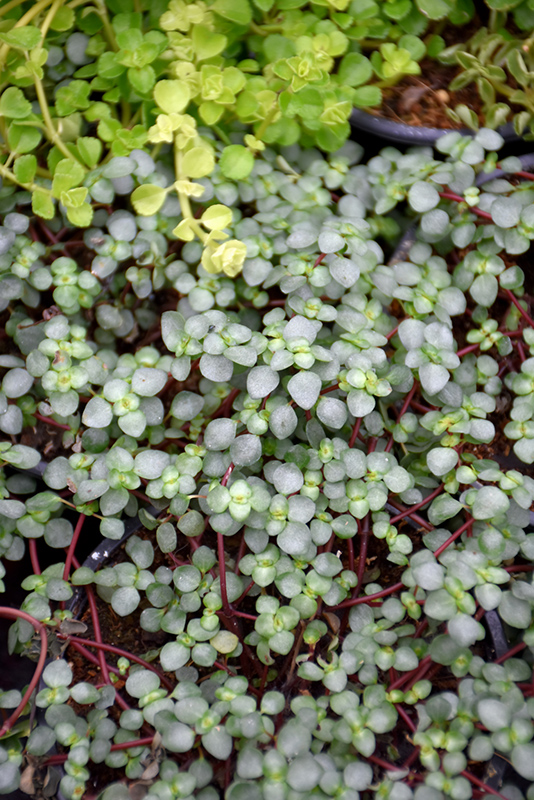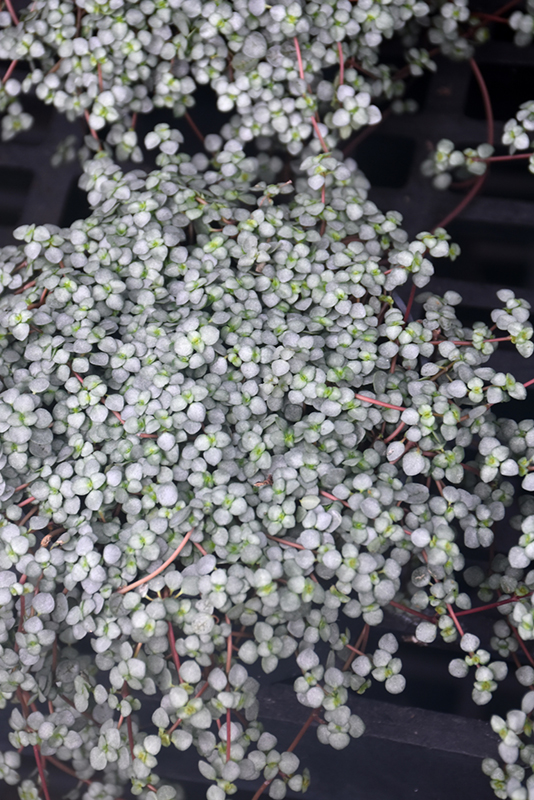Height: 4 inches
Spacing: 12 inches
Sunlight:
![]()
Other Names: Silver Sparkles Plant, Baby Tears, Gray Artillery
Description:
Amazing, tiny rounded leaves of metallic silver-gray on warm red stems; pinch stem tips to keep plant compact; a great trailing plant to cascade over containers or hanging baskets; requires only bright indirect light, this one is a great houseplant
Features & Attributes
Aquamarine Pilea's attractive tiny tomentose round leaves emerge chartreuse, turning gray in color with showy bluish-green variegation and tinges of silver throughout the year on a plant with a trailing habit of growth. The brick red stems are very effective and add to the plant's interest.
This is a dense herbaceous evergreen houseplant with a trailing habit of growth, eventually spilling over the edges of hanging baskets and containers. Its extremely fine and delicate texture is quite ornamental and should be used to full effect. This plant can be pruned at any time to keep it looking its best.
Planting & Growing
When grown indoors, Aquamarine Pilea can be expected to grow to be only 4 inches tall at maturity, with a spread of 3 feet. It grows at a medium rate, and under ideal conditions can be expected to live for approximately 5 years. This houseplant should only be grown away from direct sunlight or in a room with strong artificial light. It does best in average to evenly moist soil, but will not tolerate standing water. The surface of the soil shouldn't be allowed to dry out completely, and so you should expect to water this plant once and possibly even twice each week. Be aware that your particular watering schedule may vary depending on its location in the room, the pot size, plant size and other conditions; if in doubt, ask one of our experts in the store for advice. It will benefit from a regular feeding with a general-purpose fertilizer with every second or third watering. It is not particular as to soil pH, but grows best in rich soil. Contact the store for specific recommendations on pre-mixed potting soil for this plant.
There are many factors that will affect the ultimate height, spread and overall performance of a plant when grown indoors; among them, the size of the pot it's growing in, the amount of light it receives, watering frequency, the pruning regimen and repotting schedule. Use the information described here as a guideline only; individual performance can and will vary. Please contact the store to speak with one of our experts if you are interested in further details concerning recommendations on pot size, watering, pruning, repotting, etc.
-- THIS IS A HOUSEPLANT AND IS NOT MEANT TO SURVIVE THE WINTER OUTDOORS IN OUR CLIMATE --

